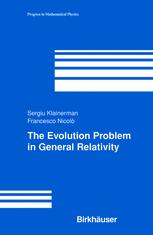

Most ebook files are in PDF format, so you can easily read them using various software such as Foxit Reader or directly on the Google Chrome browser.
Some ebook files are released by publishers in other formats such as .awz, .mobi, .epub, .fb2, etc. You may need to install specific software to read these formats on mobile/PC, such as Calibre.
Please read the tutorial at this link: https://ebookbell.com/faq
We offer FREE conversion to the popular formats you request; however, this may take some time. Therefore, right after payment, please email us, and we will try to provide the service as quickly as possible.
For some exceptional file formats or broken links (if any), please refrain from opening any disputes. Instead, email us first, and we will try to assist within a maximum of 6 hours.
EbookBell Team

4.0
56 reviewsThe main goal of this work is to revisit the proof of the global stability of Minkowski space by D. Christodoulou and S. Klainerman, [Ch-KI]. We provide a new self-contained proof of the main part of that result, which concerns the full solution of the radiation problem in vacuum, for arbitrary asymptotically flat initial data sets. This can also be interpreted as a proof of the global stability of the external region of Schwarzschild spacetime. The proof, which is a significant modification of the arguments in [Ch-Kl], is based on a double null foliation of spacetime instead of the mixed null-maximal foliation used in [Ch-Kl]. This approach is more naturally adapted to the radiation features of the Einstein equations and leads to important technical simplifications. In the first chapter we review some basic notions of differential geometry that are sys tematically used in all the remaining chapters. We then introduce the Einstein equations and the initial data sets and discuss some of the basic features of the initial value problem in general relativity. We shall review, without proofs, well-established results concerning local and global existence and uniqueness and formulate our main result. The second chapter provides the technical motivation for the proof of our main theorem.